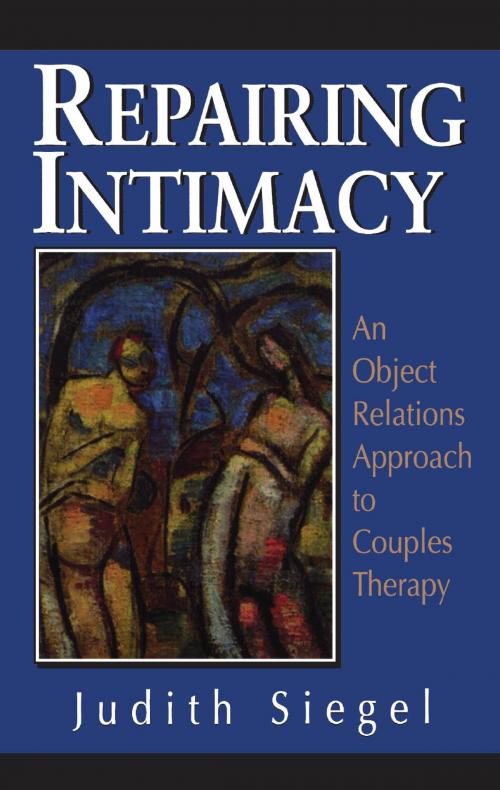Repairing Intimacy
An Object Relations Approach to Couples Therapy
Nonfiction, Health & Well Being, Psychology, Applied Psychology, Emotions| Author: | Judith Siegel Ph.D | ISBN: | 9781461630487 |
| Publisher: | Jason Aronson, Inc. | Publication: | December 1, 1995 |
| Imprint: | Jason Aronson, Inc. | Language: | English |
| Author: | Judith Siegel Ph.D |
| ISBN: | 9781461630487 |
| Publisher: | Jason Aronson, Inc. |
| Publication: | December 1, 1995 |
| Imprint: | Jason Aronson, Inc. |
| Language: | English |
Couples therapy is greatly enhanced when both the intrapsychic and interpersonal realms can be utilized. Object relations theory allows linkages between the spouses' subjective realities and their relationship in a way that allows the two worlds to be mutually informing.
In Repairing Intimacy the theories of the American object relations theorists are applied to couple dynamics. The representational world is used to explain how primitive defense mechanisms and other intrapsychic phenomena contribute to marital conflict. The structure, function, and content of the representational world all contribute to spousal expectations and the couple's capacity for intimacy. Esteem, soothing, and the propensity of splitting strongly affect the ways in which spouses interact. Projective identifications similarly provide explanations of the couple's interaction, internalized conflicts, and relationships with earlier objects.
This book explains how object relations concepts can be used in assessment and in planning treatment goals. Treatment can provide stability or help the couple relate to each other with deepened understanding. Object relations dynamics can help therapists assess which treatment objectives and goals are most applicable to the couples they treat.
The beginning and middle phases of couples treatment are given special consideration and include issues such as assessing the couple's commitment to each other and the importance of empathic listening. Other treatment topics include analysis of projective identification and the use of countertransference. Planned and unplanned terminations are also explored. In each treatment section case material is provided to explicate the therapist's role.
The book also examines common therapy issues from an object relations perspective. These include the consequences and advantages of conjoint, concurrent, and collateral treatment approaches. Consideration is also given to the choice of focusing on the couple when the initial presenting problem is the famil
Couples therapy is greatly enhanced when both the intrapsychic and interpersonal realms can be utilized. Object relations theory allows linkages between the spouses' subjective realities and their relationship in a way that allows the two worlds to be mutually informing.
In Repairing Intimacy the theories of the American object relations theorists are applied to couple dynamics. The representational world is used to explain how primitive defense mechanisms and other intrapsychic phenomena contribute to marital conflict. The structure, function, and content of the representational world all contribute to spousal expectations and the couple's capacity for intimacy. Esteem, soothing, and the propensity of splitting strongly affect the ways in which spouses interact. Projective identifications similarly provide explanations of the couple's interaction, internalized conflicts, and relationships with earlier objects.
This book explains how object relations concepts can be used in assessment and in planning treatment goals. Treatment can provide stability or help the couple relate to each other with deepened understanding. Object relations dynamics can help therapists assess which treatment objectives and goals are most applicable to the couples they treat.
The beginning and middle phases of couples treatment are given special consideration and include issues such as assessing the couple's commitment to each other and the importance of empathic listening. Other treatment topics include analysis of projective identification and the use of countertransference. Planned and unplanned terminations are also explored. In each treatment section case material is provided to explicate the therapist's role.
The book also examines common therapy issues from an object relations perspective. These include the consequences and advantages of conjoint, concurrent, and collateral treatment approaches. Consideration is also given to the choice of focusing on the couple when the initial presenting problem is the famil















